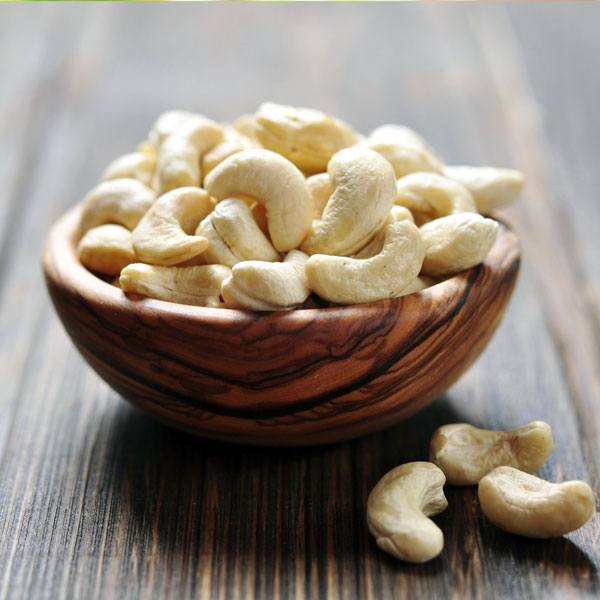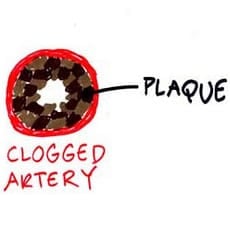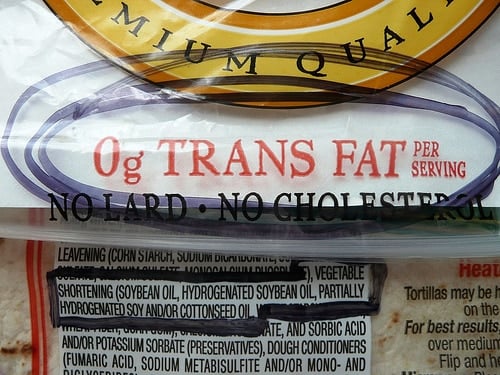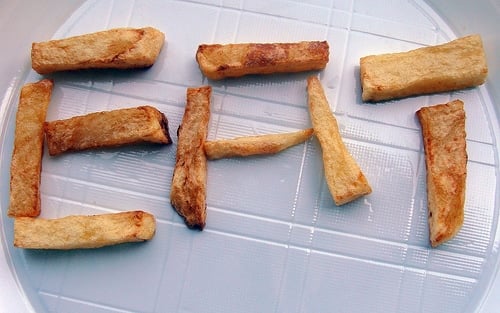The Cooking Oil Comparison Chart
Feb 13, 2012, Updated Jun 28, 2020

You already know that Extra Virgin Olive Oil is good for you. But what do you choose when it’s time to branch out and try something new? There are a lot of cooking oils out there, and many have misleading health claims on the label. It can be a bit overwhelming when you walk down the oil aisle in the store.
Some oils are very healthful, others not so much — and for different reasons. How do you know what’s really important when choosing a cooking oil? And how do you keep track of them all?
Why, with The Cooking Oil Comparison Chart, of course!
I’ve teamed up with Andy Bellatti, MS, RD, to help answer these questions with this chart. (If you don’t already follow Andy, you’re missing out.) We’ve created a one-page, printable PDF that you can take with you to the grocery story (or stick up on your fridge), that will help guide you through the labyrinth of oils.
We focused on two main factors, healthfulness and temperature-sensitivity, since some oils lose their health benefits when heated. Using a grid that makes it easy to see where each oil falls on the spectrum, you’ll be able to tell at a glance which oils to use for your salad, and which to use for your next stir-fry — and which oils to avoid altogether. We’ve also included some secondary details about each oil, along with some important pitfalls to watch out for.
Andy has written a post on his blog explaining the science behind our oil comparisons, so you’ll know why each oil is where it is on the chart. So click on over to Andy’s post to get the nitty-gritty, and then come back here and get the PDF.
The Cooking Oil Comparison Chart
792kb PDF, Last updated June 20, 2017
—
If you’d like to share this chart on your own website or blog, please be respectful (and law-abiding) and share it simply by linking directly to this post. Please do not link directly to the PDF or copy the entire chart to your own site. You may use the image at the top of this post on your own page, if you like. Thanks!
—
PS – Huge thanks to Andy for jumping on board when I proposed this project to him. I had a ton of fun collaborating with him, and appreciate his enthusiasm and expertise!
—
You may also like my other printables:
The Healthy Breakfast Flowchart
The Smoothie Flowchart
A Guide to the My Plate Icon
How to Read the Nutrition Facts Panel





















I just came across your website and saw this post (I like the page by the way!). I have been completely avoiding all oils lately after learning a lot more about being healthy in the past month. I watched a lot of videos by a guy named Jeff Novick who seems to be very inteligent. Anyways here is a link to a youtube video where he describes how and why olive oil is bad for you. He states that after eating olive oil your blood flow is reduced by 31% for up to 4 hours!
ABSOLUTELY CORRECT! Oils are the most concentrated form of calories in the food world! And the calories are 100% fat. Cutting fat out of my diet and eating whole plant foods along with exercise is how I reversed type 2 diabetes. It happened so quickly I truly believe anyone with the motivation to change can do it. Check out my blog for more info. Oh yeah…Jeff Novick is GREAT!
I really love this chart. It’s such a great resource. I run a non-profit health/wellness company and write a blog for military spouses and will be sharing the link in my next post. Thank you!
Hi – that’s a great chart. However, we use rice bran oil and I have been wondering where that fits into the scheme of things? Thanks.
It’s on the chart, over on the far right.
I have to agree with Debra on that one- grass-fed butter should not be classified as a bad source of saturated fats. Here’s a good read on it:
http://www.sott.net/articles/show/235414-10-Reasons-Why-I-Love-Butter
and
http://www.naturalnews.com/027865_saturated_fat_health.html
This is a terrific resource – well done and graphically attractive. I do wonder though, why butter, even grass-fed butter, is classified as having “bad” saturated fats. Those saturated fats are healthy and necessary for so many things, including immune function, bone health, gastrointestinal health, and healthy weight. Butter IS better!
Thanks, Debra! Not all saturated fats are created equal. Andy has a good post on it: http://smallbites.andybellatti.com/you-ask-i-answer-what-is-up-with-saturated-fats/
One oil that people don’t recognize is seed oil of Camelina. It contains an exceptional amount (up to 40 %) of omega-3 fatty acids, as well as a unique antioxidant complex making the oil very stable and resistant to heat and rancidity. Unlike any other omega-3 oil, Camelina oil is perfectly suitable for use not only as a well-balanced omega-3 supplement, but also as a health-promoting everyday cooking oil. Combined with a delicious nutty flavor, this extraordinary blend of beneficial polyunsaturated fatty acids and high oxidative stability makes Camelina oil an excellent, versatile overall source of both heart-healthy omega-3 fats and powerful antioxidants, including tocopherols, carotenoids, and phosphatides. Known as “wild flax” because it is often found growing together with common flax (and also sometimes referred to as “false flax” due to its visual similarity to regular flax), Camelina, while supplying almost as many omega-3 fatty acids as common flax,… Read more »
Awesome site! I plan to become a regular reader. Found it via a referral at lessdoing.com. Love the Cooking Oil Comparison Chart – it’s going on my fridge today. One crucial observation though: the background colors blue/gray are so light, they show up poorly on my screen (or even incorrectly – blue looks green? or is that the gray?), and when printed they both appear white (while I have no problems at all with colors with other things on either the monitor or printer).
I like the reasoning behind this chart, but I think the Lard should be re-categorized. Masterjohn’s post looking at some fat content of factory farmed lard (http://tinyurl.com/7z4q7l9) showed that this type of fat was found to be 32% PUFA and almost entirely n-6 fats. This puts it in the range of corn and soybean for n-6 content. Pastured lard is going to fare much better (6.9% and 8.7%) although I’d expect to see some large swings on pastured lard depending upon the make-up of the supplemental feeds. Pacific island lard was 3.1%, which is getting down to a much more ideal level. While researching pig feeds, I came across this disturbing bit of information (http://www.fao.org/ag/aga/agap/frg/afris/Data/736.HTM): > Soybeans contain unsaturated fatty acids that when consumed by swine will be deposited in the adipose tissue and their backfat will become increasingly soft as the amount of soy oil consumption increases. If enough… Read more »
I would agree with others that olive oil in glass could be much healthier because you avoid the plastic lining in cans. Most olive oil is sold in dark green bottles that lets very little light through. I’ll take my chances with that rather than BPA, thank you. I would argue with your placement of butter and coconut oil. Coconut oil is recommended as the best oil for cooking by most in-the-know health sources such as Dr. Mercola. I don’t understand why it is not over on the right side. Butter’s saturated fats, and saturated fats in general, are not a health problem; this is an old myth. Butter from pastured cows is considered extremely healthy by sources such as Weston A. Price foundation. I wouldn’t use much butter from cows in factory farms/CAFO dairies, though. A cow living in crowded, unhealthy conditions and fed grain can’t produce healthy milk… Read more »
Light degrades olive oil, so at least choose dark glass, not clear. Coconut oil is not on the far right because its smoke point is too low. Unrefined Coconut Oil has a smoke point of about 350 degrees Fahrenheit (refined Coconut oil is about 450). In contrast, Avocado oil (on the far right) has the highest smoke point of any plant oil, at 520. That’s not to say you can’t cook or stir-fry with Coconut Oil (I do it — I just don’t keep the burner cranked all the way up to high. I think you should consider carefully the advice you get from the Weston A. Price Foundation and Dr. Mercola. Both have merit in much of what they say — but not all. Question everything, just as I’m glad you’re questioning what I post. Some saturated fats are indeed bad, some are good. We are not lumping saturated… Read more »
Olive oil not in a glass container…why not!? There are BPA’s in the lining of tin cans. Thanks, I will take my chances on the glass containers instead!
Light is problematic for olive oil. Dark glass bottles are a reasonable way to go — just avoid the clear glass!
We just made some small revisions to the chart, including adding “or dark glass bottles” to the Olive Oil recommendation. 🙂